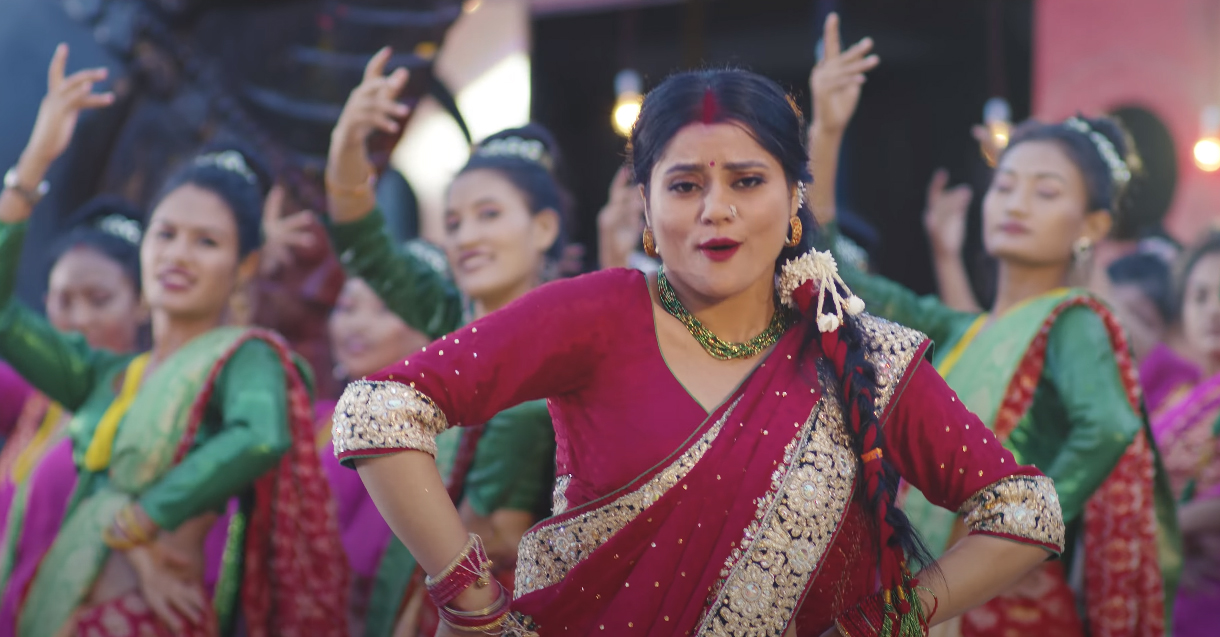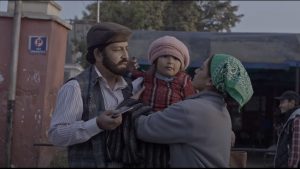For a significant part of the past decade, Nepali folk songs have dominated Nepal’s commercial music scene. You can hear them in busses, shops, weddings and now thanks to technology, even on TikTok. Its rise was quite evident during the lockdown when people were dancing to the song Soche Jhai Jindagi Rainachha, roughly translated to life is not how one thinks it is. Apart from that Pashupati Sharma’s Lutna Sake Lut, and Prakash Saput’s Galbandi have all done great on YouTube while people like Durgesh Thapa, even though controversial, have spread folk songs (lok geets) to the masses.
But, how did it get here? Folk songs, which were limited to villages in western Nepal, can now be heard everywhere in Nepal. People of all ages seem to have embraced it and enjoy it. The singers themselves have also adapted to globalisation as they have started to sing about modern issues. But, as good as it is doing, the urban crowd is yet to take it seriously or respect it.
The musical divide
Ashim Ghimire, a 23-year-old man from Kathmandu, loves music. Having grown up in a family of musicians, he listens to all kinds of music. That said, he does not really listen to folk songs.
“I can’t connect to it. Some are catchy, but I just don’t feel connected,” he says.
A significant section of Nepal’s urban youth is still unaware of songs like these even though they have been on YouTube’s trending list for over a month. The music they listen to are mostly English or Hindi and their means to listen to these songs apart from YouTube is Spotify.
“I don’t go through the trending list because there is nothing there,” says Shital Shakya, 26. “We have our playlists there and even song suggestions are based on what we like. I don’t think I’ve ever willingly listened to folk songs. Sure, I’ve danced to them during family events and weddings, but that’s different.”
But, that does not take away how popular this form of music is. If you go look at the trending section of YouTube, most of the songs you see here will be from this genre. Bishnu Majhi, a popular folk singer’s Chari Jelaima has crossed 27 million views in two months. Her song about Dashain Tihar is also doing quite well.
Telling the tales of the folks
Saput, who has been doing folk songs for 19 years, says that the rise is mostly thanks to digital platforms like YouTube and Facebook. While their audiences were limited to a particular region in the past, now, due to technology, they can reach as many people as they want.
“Apart from that people have felt a connection to this type of music. People who migrate to big cities tend to connect to this type of music more as they’ve heard it before in their towns or villages. Even though they can’t listen to it live, they have other mediums to enjoy these tunes,” says Saput.
Many believe it was Kulendra BK and Bishnu Maji’s Saalko Paatko Tapari that started the rise. The song has had over 73 million views in the past three years and that is rising every day. Another song that helped make the genre more popular is Bola Maya sung by Saput and Shanti Shree Pariyar. The song touched the hearts of millions as it talked about the harsh reality of migrant workers. Its sequel Galbandi, also did amazing as it is been watched over 48 million times on YouTube over the past two years.
“Songs like these are important as it spreads a message about what goes on in life. I’m sure millions must have related to it as a lot of people come back home in wooden boxes,” says Saput.
Lyricist Netra Aryal also agrees with Saput about the importance of writing songs that are relatable to the audience. Aryal wrote the popular song, Soche Jhai Jindagi Rainachha which has done quite well. Sung by Khem Century and Madhu Chhetri, the song talks about how life keeps on through curveballs and how we need to overcome these challenges.
“We live in a modern world now and have to adapt to what’s going on. This has been going on for years if you look at it. Folk singers have been singing relatable songs all their lives,” says Aryal.
Generating startdom
Apart from this, music videos have also changed. Shiva BK, who has made a name for himself in lok dohori [folk duet] video scene says a lot has changed since he started over two decades ago. The first change he says is the use of chorus dancers in videos.
“When I started, there were only the singers in the video. Some danced; others just sang, it was quite boring,” says BK. “But as time passed, singers started to get more open about things and started to experiment.”
He says as popularity rose, as did the budget of these singers who started to demand new things. He claims to be the first one to start chorus dancers as he has always wanted to do something different.
“It was quite a hit as others started to follow,” BK says.
He also adds, in the past, popular actors refused to act in music videos of folk songs. That has now changed as they have started to play these videos. Rajesh Hamal, Salon Basnet, Bhuwan KC, Aakash Shrestha, Barsha Siwakoti, Aanchal Sharma and Swastima Khadka are a few who have made their appearance in lok dohori music videos but this was not always the case.
“When I was directing Saalko Paatko Tapari [in 2018], I approached many actresses who were popular during that time,” says BK. “But, they didn’t want to play because they felt it didn’t go with their image. The role was played by Mariska Pokharel, who after that got a lot of calls for other videos.”
He accuses upcoming actors who think of themselves as ‘chocolate boys and girls’ of trying to think too highly of themselves.
“This is changing as Covid-19 hit them very hard. That is why we’ve been seeing these popular actors in music videos. Otherwise, I don’t think that would be the case,” says the experienced director.
Saput says this has helped market the songs and the genre too. He says these popular actors have a lot of fan following, which has definitely helped them out.
“It’s good that things are changing,” says Saput.
Another aspect that has helped in the rise of folk songs is programmes like Indreni. Indreni is lok dohori programme that is aired on Himalaya TV. The programme is recorded live and has been airing almost every day for the past 12 years, giving a platform to many singers and musicians.
“I’ve worked very hard to get this programme to where it is,” says Krishna Kandel, a singer who started the programme. “We’ve been all over Nepal and have done more than just provide platforms. We’ve made lok dohori popular. If you go look at the comments on our videos, you’ll see the impact we’ve had.”
But, the unanswered question
But, how do they attract urban crowds? Most of them are not bothered about that. Saput says he is happy with the audience he has got. He says music is a choice and that the new generation should get to choose what type of music they want to listen to.
“I can’t force people to listen to my songs. All I can do is keep singing relatable songs which might one day touch the heart of the urban population,” hopes Saput.

























